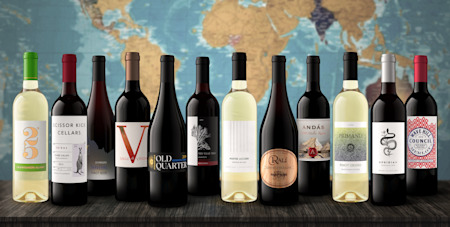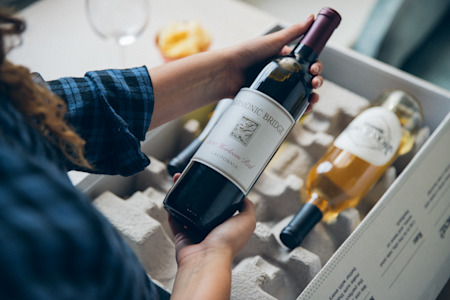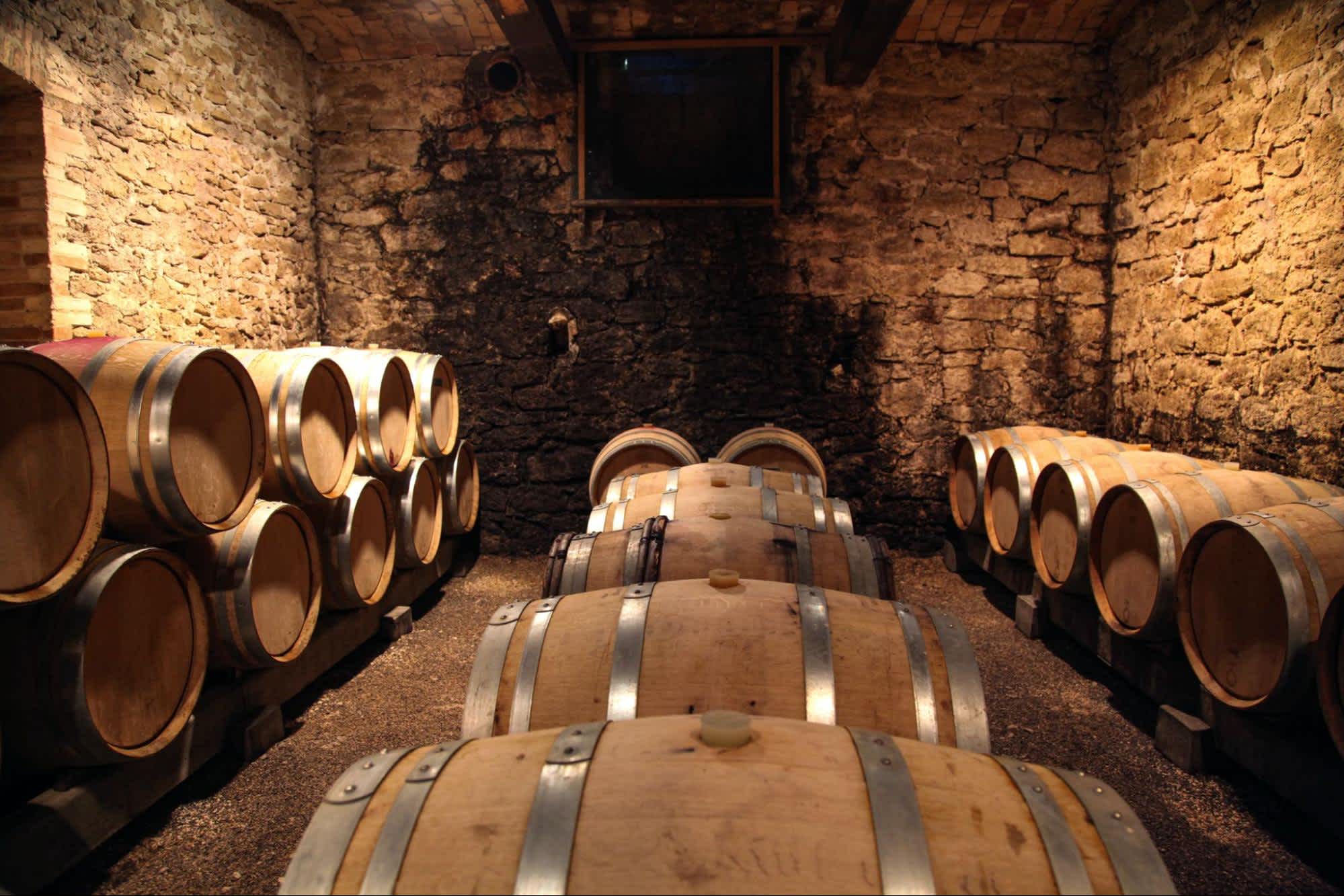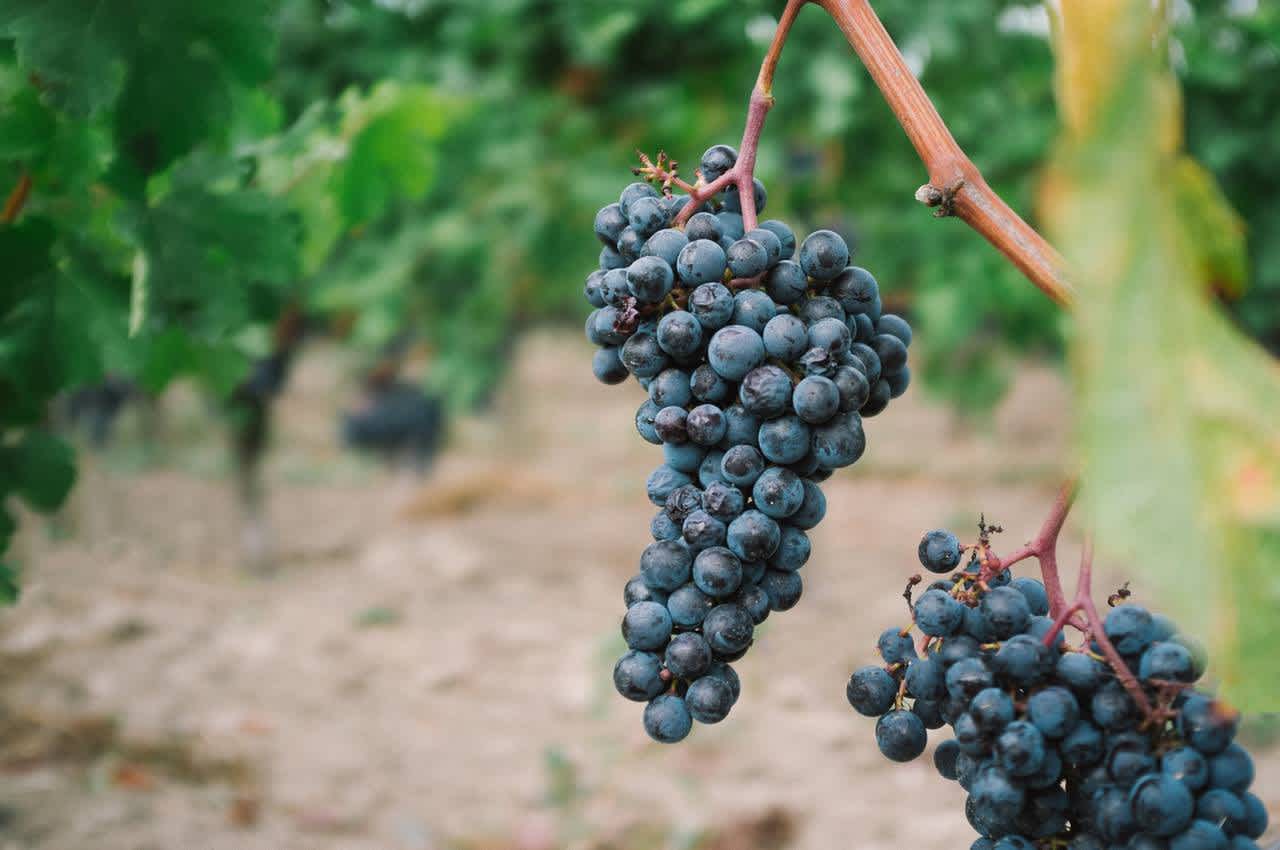The Ultimate French Wine Guide for Beginners
Learn all about French wine from a beginner's standpoint
The storied vineyards of France have an indelible mystique that's permeated beyond the country's borders and into the collective consciousness of wine lovers everywhere. Many of the finest wines on earth hail from French vineyards, and for students of wine, traveling to vineyards in the many wine-producing regions is a valuable cultural experience. The names of Champagne, Bordeaux, and Burgundy are synonymous with quality and command some of the highest wine prices on earth. But in French wine, price isn't everything. There are so many delicious undiscovered wines to enjoy.
French wine feels daunting to many new drinkers. But never fear, because excellent wines from France are easy to find. To see what you've been missing, stop in for a wine tasting at your local wine shop or by your favorite French restaurant for a glass of wine and a little knowledge.
With our basic guide to French wine, you'll be able to walk into a wine shop or scan a restaurant list with the confidence that you'll at least find a glass you want to try.

Shop Award-Winning French Wines
Discover award-winning wines from France at incredibly affordable prices with Firstleaf wine club. Shop now and explore the Best French Wines.
Shop French WinesIN THIS ARTICLE:
Want personalized wines?
Get your first box of wines for $44.95 + free shipping.

French Wine Labels
For wine drinkers outside of Europe, the labels can initially be confusing. While they show things we are used to (alcohol content as a percentage breakdown of the total liquid, the vintage, and the winery's location), they don't always list the grapes in the wine.
In Europe, certain regions are synonymous with specific grapes simply because they've been growing that variety for the better part of a century, if not far longer. To use a place name, wine producers need to comply with the rules in their region. In France these geographical regions are called A.O.C.s or "appellation d'origine contrôlée."
The A.O.C. on a French wine label will tell you exactly what type of wine to expect, as long as you have a passing familiarity with French wine. The most significant exception is a recent trend to make artisanal wines against A.O.C. rules and label them as "Vin de France," the broadest category for wine made in the country and typically reserved for basic table wine. Many natural winemakers are choosing to label their wines as "Vin de France" to maintain more control over the winemaking process.
Grape Variety Breakdown
There are 250 officially recognized grapes grown in French vineyards, but surprisingly the most planted white wine grape is one that people have rarely tasted, Ugni Blanc. This grape is used in brandy production and is primarily grown in the south of France.
Merlot leads the field of red grapes, which comes as no surprise as it is considered a "noble variety." Almost all of the noble grapes come from France. These international varieties are a "who's who" of wine grapes: Cabernet Sauvignon, Chardonnay, Chenin Blanc, Merlot, Pinot Noir, Sauvignon Blanc, Semillon, and Syrah. Even Riesling, the only non-French noble variety, is well represented in Alsace.
Did you know?
It is Grape Varieties and not Grape Varietals. Varietal refers to wines that are made entirely from one grape variety.
French Wine Regions
The French wine industry is vast and well organized, so even the most specific regional wines are produced with exacting standards. This guide will break down the major regions where quality wine can be found, organized from North to South.
Champagne
Champagne is the crème de la crème of sparkling wine and the northernmost wine region in France. You may have heard of huge brands like Dom Perignon or Moët & Chandon, but today there is a growing movement of small grower-producers worth seeking as well.
The name “Champagne” is so prevalent that many use it to describe any sparkling wine, but this is incorrect. Only sparkling wine from the Champagne region made in the Méthode Champenoise is real Champagne. Sparkling wines from other regions of France made in this method are called Cremants.
The main grapes are Chardonnay, Pinot Noir, and Pinot Meunier, although a few others sometimes find their way into the mix. Champagne labels are helpful and tell you what kind of wine you are drinking. Rosé, Blanc de Noirs ("white wine from black grapes" uses Pinot Noir or Pinot Meunier), and Blanc de Blancs ("white wine from white grapes" typically Chardonnay) are all common and clearly labeled.
The labels will also tell you how sweet the wine will be (Brut means dry; Demi-Sec means medium dry) and how old it is. Champagne is one of the few regions where "N.V." (non-vintage) is common. Vintages are only declared in the best years, and houses blend wine from different years to attain a particular flavor profile or style.
Alsace
Alsace is a region on the border with Germany in the shadow of the Vosges Mountains, where it's common to find Alsatian-speaking winemakers who make unique white varietal wines that come in tall, skinny bottles. Gewürztraminer, Riesling, Pinot Gris, and more find their home here. In addition, there are some delicious Cremants and the occasional late-harvest wine (labeled Vendange Tardive) that will change the way you think about sweet, floral wines.
Burgundy (Bourgogne)
Burgundy is synonymous with quality (and price) in French wine. Burgundians are single-variety specialists. Red Burgundy is Pinot Noir, and white Burgundy is Chardonnay. Tiny parcels of other grapes are grown there, but virtually all wines are Pinot and Chardonnay.
The Côte D'Or (Golden Slope) has the highest quality vineyards in the region. The best are designated "Grand Cru vineyards"—single vineyards with perfect conditions that grow the best grapes.
Other important regions of Burgundy include Chablis, known for making incredible cool-climate Chardonnays in the far north, Côte Chalonnaise, and Mâconnais in the south.
Jura
Between Burgundy and the Swiss border are the wild vineyards of the Jura valley. This region is famous as one of the cradles of the natural wine movement and today is still home to fantastic philosopher winemakers.
The unique Jurassien Vin Jaune (made with the white Savagnin grape) has graduated from a simple sherry-like country wine to one of the region's most sought after (and expensive) bottles. There are also some excellent Pinot Noirs and red blends featuring the Poulsard and Trousseau grapes.
Loire Valley
The Loire Valley on the western side of France is similarly famous for natural winemaking. It has evolved into one of the most dynamic regions in the country, specializing in many different grapes. In the western Loire, you’ll find Sauvignon Blanc and Pinot Noir. Moving away from the moderating influence of the Atlantic Ocean, Cabernet Franc and Chenin Blanc take over. If you like sparkling wine, Loire cremants are worth seeking out.
Fun Fact
Sancerre and Pouilly-Fumé are rightly famous and are both made with Sauvignon Blanc in the Loire.
Bordeaux
Bordeaux is almost the exact opposite of Burgundy. Unlike the subtle varietal wines of Burgundy, Bordeaux is most often a powerful blend. It's the largest wine-producing region in France and has more wine estates and famous appellations than anywhere else in the country.
The Medoc and Graves regions on the left bank of the river are known for still red wine blends that are most often made with Cabernet Sauvignon as the main grape. Right bank regions like Pomerol and St-Emilion are mostly Merlot with a bit of Cabernet Franc. You can also find Petit Verdot playing a supporting role in the occasional red Bordeaux wine.
Reds make up the lion's share of Bordeaux's winemaking, but white wines (made from Semillon, Sauvignon Blanc, or Sauvignon Gris), rosés, and incredible late harvest dessert wines exist as well. The sweet wines of Sauternes are the best of their kind on earth (especially from the inimitable Chateau D'Yqueum) and are made primarily from Semillon .
Rhône Valley
This long valley runs from just south of Burgundy to the upper limits of Provence. While it is technically one valley, the size and topography have created a distinct split in the winemaking traditions.
The northern end of the Rhône is home to prestigious appellations that specialize in Syrah like Côte-Rôtie and Hermitage. However, most of the basic Côtes du Rhône wines, as well as the more serious wines of Châteauneuf-du-Pape, are made at the southern end of the Rhône valley. These Grenache-based wines feature a rotating cast of supporting grapes but typically are part of the GSM (Grenache, Syrah, and Mourvèdre) blend.
Beaujolais, famous for the ultra-fresh Beaujolais Nouveau made from Gamay grapes, is technically part of the Rhône, but their Burgundian approach to winemaking keeps them in a league of their own.
Provence
The pale rosés of Provence evoke the Mediterranean lifestyle for so many travelers. The pink wine made in the Mediterranean climate is the perfect balance to the rustic food of the region. While 13 varieties can be used to make wines in the Côtes de Provence A.O.C., Grenache, Cinsault, and Syrah are the most common. A growing number of still red and white wines in the region are also worth seeking out.
Languedoc-Roussillon
In the south of France along the Mediterranean and the border of Spain is the fiery region of Languedoc-Roussillon, where some winemakers are eschewing the rules of traditional French winemaking and bottling their unique Grenache, Syrah, and Carignan wines as Vin de France. The whites are more often than not Chardonnay, although some use Sauvignon Blanc or Viognier.
Explore French Wines
While this is just the tip of the iceberg of French wine, this guide will help any wine beginner shop for wine with ease. From everyday wines to single vineyard Grand Cru selections, there’s a world of wine to discover in France.

Take Our Quiz & Discover French Wines You'll Love
Join Firstleaf to taste delicious award-winning French wines delivered straight to your door. Take the quiz today to get the French Wine pairings for your individual palate.
Take The Quiz TodayIN THIS ARTICLE
Want personalized wines?
Get your first box of wines for $44.95 + free shipping.


WinePrint™ by Firstleaf
Are you looking to learn more about your wine preferences? Check out our Wine Print for an in-depth look at your personal tasting profile. Discover your favorite wines, varietals, regions, and tasting notes and get personalized recommendations wherever you are.
Learn More
